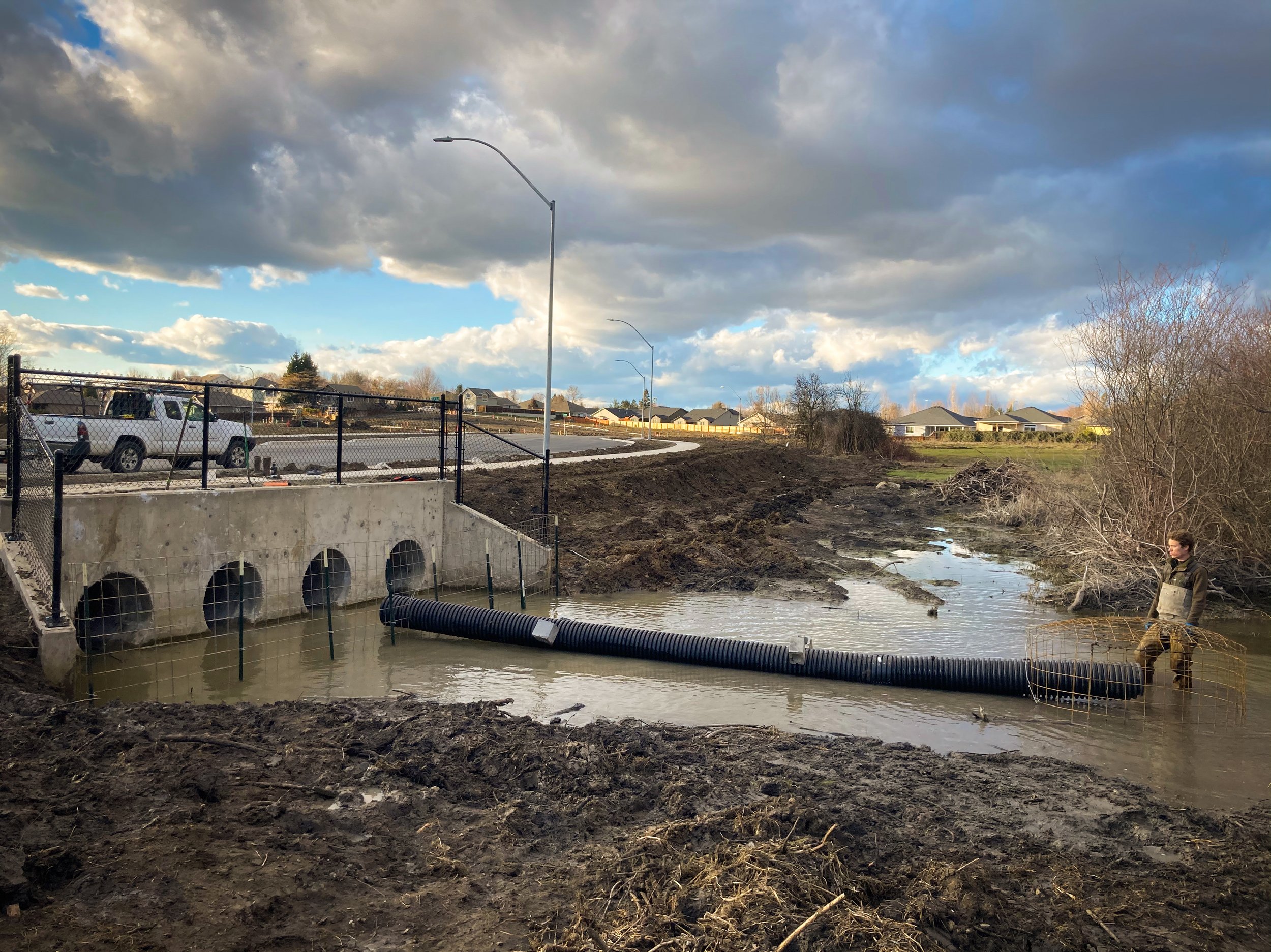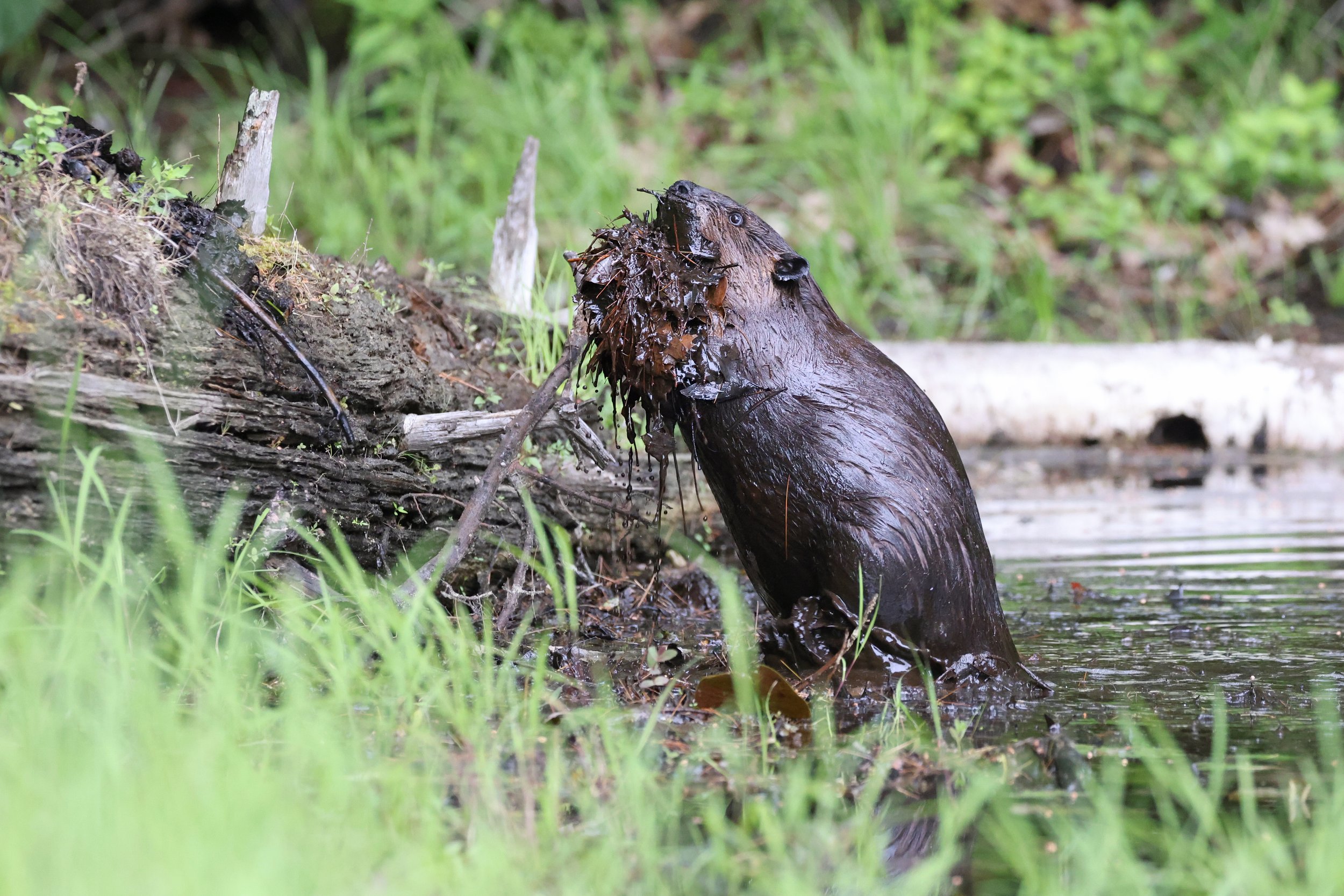
Project Beaver case studies.
"You can tear a beaver dam out and literally overnight it can be almost totally rebuilt, and you can do that day after day after day and they're going to come back and come back and come back. I heard about devices that would control the level of the water behind the beaver dams."
—Lyle Speisschaert, Speisschaert Farms in Forest Grove, Oregon
"We needed to get a hold of someone that knows how to protect the area. You have to respect nature. You have to respect the setting out here, and we need to take care of it. It is a living, working environment that is so cool to be a part of."
—Rick Cook, Shipley-Cook Farmstead in Lake Oswego, Oregon
Case studies
-

Public lands and beaver plans
Hundreds of thousands of acres of public lands are in dire need of restoration. We’re honored to be working with both the U.S. Forest Service on the Rogue River Siskiyou National Forest and the Bureau of Land Management on the Cascade Siskiyou National Monument to show what partnering with beavers at a large scale could look like. In both of these projects we will create a roadmap to incrementally improve the function and resiliency of aquatic habitat by supporting more beavers on the landscape. There’s a reason beavers are affectionately nicknamed “nature’s engineers," because they truly can restore our watersheds faster, better, and cheaper than we humans can, and at the landscape scale.
-

Beavers and Coho salmon on the Oregon coast
The federal Recovery Plan for Oregon Coast Coho salmon identifies an increase in beaver ponds and beaver-managed aquatic habitat as the single most impactful way to recover the endangered species. And yet, there is minimal evidence of progress on the ground. Why? This stakeholder engagement project seeks to explore the web of relationships between management agencies, restoration practitioners, landowners, and beaver themselves. We’ll investigate what’s holding us back from deploying beaver-based restoration at the spatial and temporal scales needed, take stock of what we’ve learned, then collaborate with key stakeholders to build a foundation for new beaver-based restoration projects that work to recover Oregon Coast coho.
-

Beavers and butterflies at Vesper Meadow
Decades of human-caused degradation—such as channel straightening, concrete damming, and overgrazing—have left Vesper Meadow a dry, simplified, and channelized shell of the wet meadow ecosystem it once was. Today the privately-owned property is managed as a nonprofit organization, with an emphasis on education and stewardship. This project will illuminate the myriad ways that low-tech process-based restoration leads to channel aggradation, reconnection, and improved water quality and quantity. The revitalized wet meadow ecosystem will once again be able to support a host of biologically and culturally significant species, including native first foods like yampa and camas, and their pollinators like the threatened Mardon skipper butterfly.
-

Greenlighting beaver-based restoration in Oregon
The federal and state laws that protect Oregon's rivers, salmon and fish and wildlife habitat make it difficult, if not impossible, to get permits for beaver-based restoration and coexistence projects, despite the fact that these projects to partner with beavers can protect ecosystem health and contribute to species resilience and recovery. We are working with federal and state agencies in Oregon toward an expedited permitting process for beaver coexistence techniques in accordance with the Best Management Practices for flow devices, tree and crop protection.
-

Supporting more beavers in the Rogue Basin
How do we work for more beavers on the landscape; with the ability to positively impact the hydrology, biology, and biodiversity of the ecosystem? We’ve partnered with the U.S. Fish and Wildlife Service and others to better understand beaver populations and habitat use in southern Oregon. Where are they living, and where are they not? Why? And what factors may be preventing them from moving into streams where we’d love to see them deploy their engineering skills? A common limiting factor that impedes dispersing beavers from recolonizing those streams is when they come into conflict with human infrastructure as they pass by. But rather than killing or removing them, there’s a suite of proven, inexpensive strategies we can employ to protect our property and assure our buck-toothed neighbors remain welcome. Through this project, we are working out the structure for taking a strategic approach to beaver-based restoration across an entire basin.
